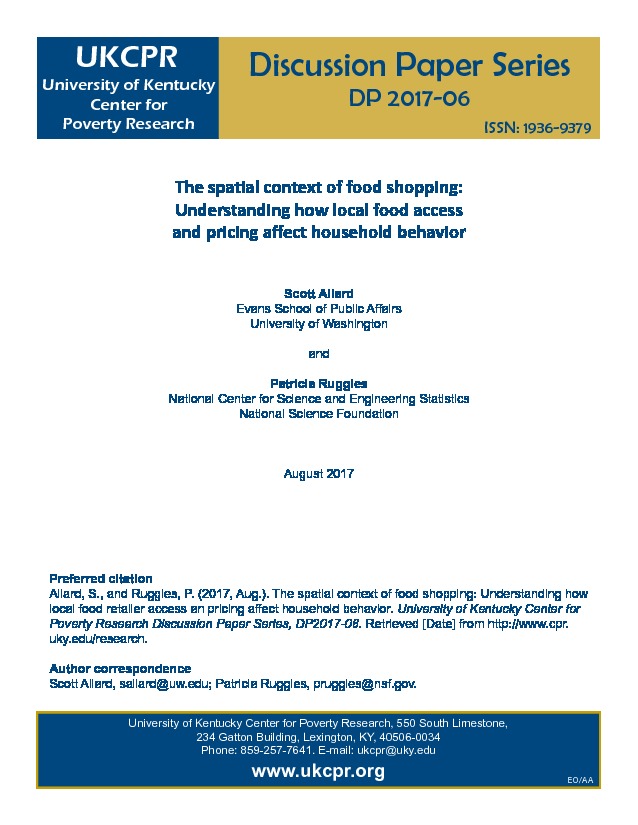Rising rates of food insecurity have led researchers to examine how the local retail food environment affects household food purchases, consumption, and food security. Research has paid particular attention to the presence of “food deserts,” areas with low or no spatial access to retail stores, such as supermarkets and large grocery stores, which sell fresh food and groceries at affordable prices. Low spatial access to supermarkets and grocery stores is thought to increase the costs of acquiring food for the household and reduce household food consumption. Few data sources, however, can link local food retailers and pricing, household food purchases, and food insecurity in space. To address these gaps in the literature, this project explores the relationships between household food security, food purchases, food pricing, and the geography of the local retail food infrastructure, using unique public and restricted use data files from the National Household Food Acquisition and Purchase Survey (FoodAPS). Household shopping outcomes are modeled in preliminary analyses reported here as a function of spatial access to retailers. We believe our findings will be of interest to policymakers, advocates, and program executives seeking to improve food security among low-income populations.
Research
FoodAPSPDF Thumbnail
